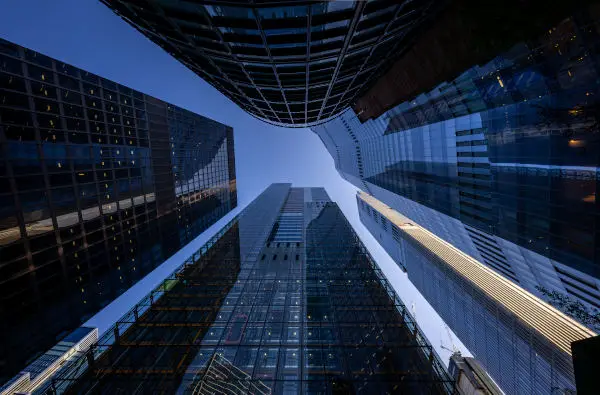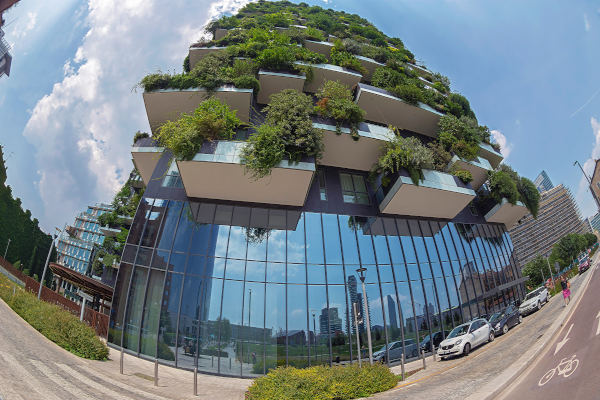
Have you ever felt a shift in energy when entering a new neighborhood? In feng shui, the concept of harmonious surroundings goes beyond the walls of your own home. The buildings around you, both big and small, play a significant role in shaping the overall energy flow, or qi, in your environment.
Just like a garden thrives with abundant sunlight and a babbling brook, your living space benefits from positive influences in its surroundings. When the surrounding buildings promote a sense of balance and vitality, it can contribute to your well-being and prosperity. Conversely, elements that create stagnation or discord can disrupt the flow of qi, potentially leading to feelings of unease or hindering your aspirations.
By understanding the different types of negative influences surrounding buildings can exert, we can create strategies to mitigate their impact and cultivate a more harmonious environment.
Negative Influences of Surrounding Buildings
Surrounding buildings can sometimes bring unwanted energy into your space, impacting your Feng Shui journey. Let’s explore some of these influences and how to navigate them effectively.
Tall Buildings: The Shadow Effect
Let’s imagine your ideal home: a place filled with light, warmth, and positive energy. Now picture a giant looming over it, casting a long shadow that seems to linger all day. In feng shui, this is the shadow effect of tall buildings. While there’s nothing wrong with modern architecture, towering structures can disrupt the flow of positive energy, or qi, in your environment.
So, how do these shadows translate into bad feng shui? Prolonged darkness can create feelings of stagnation and isolation. It can also disrupt your natural circadian rhythm, making it harder to sleep soundly and wake up feeling refreshed. But don’t worry, there are ways to mitigate this imbalance!
Mitigating the Impact of Tall Buildings
While living in the shadow of a skyscraper might not be ideal feng shui, there are steps you can take to lessen its influence and invite more positive energy into your space. Here are some practical tips:
- Embrace Natural Light: Sheer curtains or blinds can help diffuse harsh sunlight, while still allowing natural light to filter through during the day. This helps combat the feeling of constant darkness and keeps your home feeling bright and airy.
- Mirror Magic: Strategically placed mirrors can reflect light deeper into your home, bouncing back the positive energy that might be blocked by the shadows. However, avoid placing mirrors directly opposite the windows where they might reflect the looming building back at you.
- Lighten Up Your Decor: Opt for light and airy colors for your walls and furniture. This can create a sense of spaciousness and counteract the feeling of being hemmed in by the shadows.
- Bring in the Greenery: Plants are natural energy enhancers. Houseplants not only improve air quality but also add a touch of life and vibrancy to your space.
- Focus on Uplifting Scents: Burning essential oils or diffusing invigorating scents like citrus or lemongrass can uplift your mood and combat feelings of stagnation associated with prolonged shadows.

Buildings with Sharp Angles: Sha Qi
Sharp angles in surrounding buildings can introduce Sha Qi, or negative energy, into your space. Sha Qi emanates from sharp angles, corners, and edges of buildings, creating disruptive energy patterns.
These structures may appear aggressive or imposing, signaling potential challenges to the flow of positive energy in your environment. Additionally, the closer a building with sharp angles is to your home, the stronger the potential negative influence.
Observe the architecture of neighboring buildings. Do you notice sharp corners or jagged edges? These features could be sources of Sha Qi, casting unsettling vibes into your space.
Remedies for Sharp Angles
Fortunately, there are practical steps you can take to minimize the effects of Sha Qi from sharp angles:
- The Power of Plants: Place lush, leafy plants on your windowsills or balconies to act as a natural barrier against Sha Qi. The rounded shapes and vibrant energy of plants can help deflect negative energy and promote a sense of well-being.
- Curtains for the Win: Strategically placed curtains or blinds can soften the visual impact of sharp angles from outside. Opt for curved curtain rods to further emphasize a sense of flow and deflect negativity.
- Bells for Harmony: Wind chimes or decorative bells placed near windows can deflect Sha Qi with their gentle tinkling sounds. The movement and sound are believed to disperse negative energy and usher in positive vibrations.
- Mirrors with Intention: While we mentioned avoiding mirrors reflecting a looming building, strategically placed small mirrors can be beneficial. Placing them at an angle to deflect the sharp edges of a neighboring structure can help redirect Sha Qi away from your home.
- Crystals for Balance: Crystals like black tourmaline or obsidian are believed to possess protective properties. Placing them near windows or doorways facing buildings with sharp angles can help absorb negative energy and promote a sense of security.
Related reading: 18 Interior Design Elements that are BAD Feng Shui – Opens in new tab
Dilapidated Structures: Stagnant Energy
Dilapidated structures can harbor stagnant energy, disrupting the flow of positive Qi in your surroundings. Let’s delve into how to recognize this stagnant energy and its impact on your Feng Shui journey.
Identifying Stagnant Energy in Surrounding Buildings
One way to recognize stagnant energy is through visible decay. Dilapidated structures often exhibit signs of neglect such as crumbling walls, broken windows, or overgrown vegetation.
These physical manifestations not only detract from the aesthetic appeal of the surroundings but also contribute to stagnant energy accumulation. Additionally, abandoned spaces devoid of activity can harbor stagnant energy.
Empty buildings with no signs of life can feel heavy and lifeless, affecting the overall vibrancy of the environment. Trusting one’s intuition is also important in identifying stagnant energy.
If a building elicits feelings of discomfort or unease, it may indicate the presence of stagnant energy. Paying attention to emotional responses when interacting with the surroundings can provide valuable insights into the energetic quality of the space.

Clearing Stagnant Qi from Dilapidated Structures
Addressing stagnant Qi in dilapidated structures requires intentional action and mindful restoration:
- Physical Cleansing: Begin by physically cleaning the space. Remove debris, clutter, and any items contributing to the sense of neglect. Clearing the space of physical impediments helps facilitate the release of stagnant energy.
- Renovation and Repair: Invest in renovating or repairing the structure to restore its vitality. Repairing broken windows, patching up cracks, and repainting walls can breathe new life into the space, revitalizing its energetic flow.
- Space Clearing Rituals: Perform space clearing rituals to dispel stagnant energy and invite positive Qi into the environment. Techniques such as smudging with sage, burning incense, or ringing bells can effectively cleanse the space of lingering negativity.
- Intentional Feng Shui Enhancements: Implement Feng Shui enhancements to promote positive energy flow within the renovated space. Introduce elements such as vibrant colors, artwork depicting scenes of vitality, and indoor plants to infuse the environment with fresh, revitalizing energy.
Related reading: 17 External Features of a House that are Bad Feng Shui and How to Fix It – Opens in new tab
Overbearing Structures: Blocking Qi Flow
Overbearing structures can disrupt the natural flow of Qi, hindering the harmony and balance of your environment. In Feng Shui philosophy, Qi is the life force energy that flows through everything, connecting all aspects of the universe.
It’s believed to be constantly flowing and shifting, bringing positive energy and promoting well-being. Ideally, Qi should move smoothly and evenly through your living space.
Effects of Overbearing Structures on Qi Movement
Overbearing structures can obstruct the smooth flow of Qi, creating energetic blockages and disturbances. These imposing buildings may cast shadows, create oppressive atmospheres, or block natural airflow, disrupting the free movement of energy throughout the space. As a result, occupants may experience feelings of stagnation, discomfort, or imbalance.

Strategies to Redirect and Enhance Qi Flow
While you can’t control the external environment, there are ways to redirect and enhance Qi flow within your own space:
- Curved Furniture: Opt for furniture with curved lines instead of sharp edges. This helps Qi flow smoothly and prevents stagnation.
- Declutter and Clear: Clutter acts as a blockage for Qi. Regularly declutter your space and create clear pathways for energy to move freely.
- Invite Nature In: Houseplants not only purify the air but also add vibrant life force energy to your space.
- Mirrors with Care: Strategically placed mirrors can reflect light and amplify positive energy. However, avoid placing them directly opposite windows, as they might reflect the overbearing structure back at you.
- Wind Chimes and Bells: The gentle sounds of wind chimes or bells are believed to disperse stagnant energy and usher in positive vibrations.
By incorporating these strategies, you can create a more balanced and inviting environment within your home, even if overbearing structures loom nearby.
Want to learn more about Feng Shui? Check out our suggestions: Feng Shui Bookshelf – Opens in new tab
Negative Architectural Features
Negative architectural features can significantly impact the Feng Shui of a space, disrupting its harmony and balance. Let’s explore some of these features:
Excessive Use of Glass: Reflective Surfaces and Energy
Glass buildings are renowned for their sleek and modern aesthetic, often characterized by expansive windows and reflective surfaces. While glass offers undeniable benefits, its reflective nature can pose some challenges from a feng shui perspective.
Reflecting Away Positive Energy: Large glass buildings opposite your home might reflect away positive energy instead of allowing it to enter your space. This can lead to a feeling of a disconnected or isolated environment.
- Visual Clutter: Reflections of the surrounding environment on glass facades can create visual clutter, overwhelming the senses and disrupting the flow of Qi. Feeling Ungrounded: An abundance of glass and chrome can create a sense of being ungrounded and lacking a sense of stability.

Balancing Reflective Surfaces with Natural Elements
The key to mitigating the challenges of glass buildings lies in creating balance. Here are some tips:
- Embrace Natural Materials: Incorporate grounding elements like wood, stone, or natural fibers into your home decor. This helps create a sense of stability and balance the reflective energy of glass.
- Curtains for Comfort: Strategically placed curtains or blinds can help control the amount of reflected light and visual clutter entering your space. Opt for soft, natural fabrics to further enhance a sense of comfort.
- Living Plants: Houseplants are not just aesthetically pleasing; they also help absorb negative energy and promote a sense of well-being. Place them near windows to create a natural barrier against reflected energy.
- The Power of Water Features: Water features, like small fountains or bubbling rocks, are believed to activate positive energy flow. They can be particularly beneficial in spaces with a lot of glass and chrome.
- Utilize Earthy Colors: Opt for earthy color palettes inspired by nature to create a sense of harmony and balance within the space. Earth tones such as browns, greens, and terracottas evoke feelings of grounding and stability, complementing the airy qualities of glass.
🍀 Our “Feng Shui Master” app is your trusted companion, offering a useful guide to implementing Feng Shui principles. Try it now!
Unbalanced Proportions: Disharmony in Design
Unbalanced architectural proportions can disrupt the flow of energy in a space, leading to disharmony and imbalance. Unbalanced architectural proportions often manifest in several noticeable ways, such as:
- Towers vs. Squat Structures: A building with a narrow base and an excessively tall top can appear top-heavy and visually unsettling. Conversely, a very wide building with a short roofline might feel squat and stagnant.
- Missing Sections: Buildings with oddly shaped cut-outs or missing sections can create a sense of incompleteness and disrupt the visual flow.
- Juxtaposed Styles: A building combining architectural styles in a jarring way, like a modern addition grafted onto a classic facade, can create visual tension and disharmony.
These are just a few examples, and sometimes the feeling of imbalance might be more intuitive. If a building evokes a sense of unease or visual discomfort, it’s likely due to some form of disharmony in its proportions.

Incorporating Balance Through Landscaping and Design Elements
While you can’t alter the design of neighboring buildings, you can create a sense of balance within your own space. Here’s how:
- Landscaping for Harmony: Strategically placed trees or shrubs can help mask unbalanced proportions in surrounding structures. Planting with height variation can also create a sense of visual equilibrium.
- Harmonious Design Elements: Incorporate design elements that promote balance and cohesion, such as repeating patterns, consistent color schemes, and proportional scaling of architectural features.
- Curtains and Blinds: Well-placed curtains or blinds can soften the visual impact of an unbalanced building facade. Opt for neutral tones or vertical stripes to create a sense of visual order.
- Mirrors with Intention: Small, strategically placed mirrors can reflect positive aspects of your surroundings, like greenery or a clear blue sky, and help draw attention away from unbalanced structures.
- Balance Within Your Home: Create a sense of balance within your own home by arranging furniture and decor in a way that feels harmonious and proportionate.
- Natural Transitions: Use landscaping to create natural transitions between different architectural elements, softening the edges and fostering a sense of continuity and flow throughout the space.
Related reading: Geography’s Role in Feng Shui: Choosing the Right Location – Opens in new tab
Cluttered Skylines: Visual Pollution
Imagine looking out your window and seeing a horizon dominated by a chaotic jumble of buildings, a forest of concrete and glass. This visual overload is what feng shui refers to as a cluttered skyline, and it can have a significant impact on your well-being.
Research suggests that exposure to visual clutter can have negative consequences for mental health. A cluttered skyline, with its constant visual stimulation, can be overwhelming and contribute to feelings of stress and anxiety.
The abundance of visual information can make it difficult to concentrate and hinder your ability to focus on tasks. The visual fatigue caused by a cluttered skyline can leave you feeling drained and lacking in energy. Additionally, the dominance of buildings in a cluttered skyline can create a feeling of disconnection from the natural world, which is essential for our well-being.
While you can’t necessarily change the skyline itself, there are ways to create a more calming and restorative environment within your own space.

Designing Green Spaces to Counteract Visual Pollution
By incorporating elements of nature into your home, you can counteract the negative effects of a cluttered skyline and promote feelings of peace and well-being. Here are some ideas:
- Indoor Plants: Houseplants not only purify the air but also bring life and a sense of serenity to your space. Group plants together to create a mini indoor garden.
- Vertical Gardens: Vertical gardens are a space-saving way to incorporate greenery into your walls. They create a living wall that can block the view of a cluttered skyline while adding a touch of nature indoors.
- Nature-Inspired Decor: Bring the calming essence of nature indoors with artwork, photographs, or decorative items that feature natural landscapes.
- Create a Balcony Oasis: If you have a balcony, transform it into a green haven. Add planters with flowers, herbs, or small trees to create a private sanctuary amidst the urban landscape.
By surrounding yourself with elements of nature, you can create a more calming and visually restorative environment within your own home, even if the view outside is cluttered with buildings.
Here’s a table comparing different negative architectural features and their impact on Feng Shui.
| Negative Architectural Feature | Characteristics | Impact on Feng Shui | Remedies |
|---|---|---|---|
| Tall Buildings | Casts shadows, obstructs energy flow | Creates stagnation and heaviness | Introduce bright lights, vibrant colors, tall plants, and mirrors |
| Buildings with Sharp Angles | Sharp corners, aggressive appearance | Generates Sha Qi and disrupts energy flow | Soften edges with rounded elements, strategic placement of plants, and Feng Shui cures |
| Dilapidated Structures | Signs of neglect, decay | Harbors stagnant energy | Physically clean space, repair and renovate, perform space clearing rituals |
| Overbearing Structures | Blocks Qi flow, oppressive atmosphere | Creates energetic blockages | Implement Feng Shui adjustments, introduce natural elements, and modify architecture |
| Excessive Use of Glass | Reflective surfaces, lack of privacy | Amplifies external energy, disrupts tranquility | Balance with natural elements, incorporate greenery, and use earthy colors |
| Unbalanced Proportions | Disproportionate sizing, asymmetrical designs | Causes visual imbalance | Symmetrical landscaping, harmonious design elements, and mindful placement of objects |
| Cluttered Skylines | Excessive buildings and structures | Visual pollution, stress | Design urban parks and gardens, vertical gardens, street trees, and community engagement |
Related reading: 11 Feng Shui Benefits That Will Transform Your Life (From Sleep to Success!)-Opens in new tab

Practical Tips for Improving Surrounding Feng Shui
Feeling overwhelmed by the negative influences of surrounding buildings? Don’t worry! By taking a proactive approach and implementing some practical feng shui techniques, you can create a more harmonious and uplifting environment within your own home.
Conducting a Feng Shui Assessment of Surrounding Structures
Conducting a Feng Shui assessment of surrounding structures is a comprehensive process that involves careful observation and analysis. Start by examining the physical characteristics of nearby buildings, including their size, shape, and orientation in relation to your space. Consider how these factors may influence the flow of energy, or Qi, within your environment.
Next, assess the architectural features of surrounding structures. Look for any elements that may contribute to positive or negative energy, such as sharp angles, tall buildings, or dilapidated structures. Note how these features align with Feng Shui principles and their potential impact on your well-being.
Pay attention to the quality of light and airflow in your surroundings. Natural light and fresh air are essential for promoting positive energy flow, so consider how nearby buildings may obstruct or enhance these vital elements.
Evaluate the overall atmosphere and ambiance of the area. Notice how you feel when you’re in the vicinity of surrounding structures. Do you feel energized and uplifted, or do you sense a heaviness or stagnation in the air? Your intuitive impressions can provide valuable insights into the energetic quality of the space.
In addition to assessing the physical characteristics of surrounding structures, consider the historical and cultural context of the area. Take note of any significant landmarks, natural features, or historical sites that may influence the energy of the environment.
Finally, seek guidance from a qualified Feng Shui practitioner if you need assistance with your assessment. A trained expert can offer valuable insights and recommendations tailored to your specific situation, helping you optimize the Feng Shui of your surroundings for maximum harmony and well-being.
Here’s a Feng Shui Assessment Checklist that you can use to evaluate surrounding structures.
| Aspect to Assess | Description |
|---|---|
| Building Size | Evaluate the size of surrounding buildings in relation to your space. |
| Building Shape | Assess the shape of nearby structures, including any sharp angles or irregularities. |
| Building Orientation | Note the orientation of buildings and how they align with compass directions. |
| Architectural Features | Identify any architectural elements that may impact energy flow, such as sharp corners or protruding structures. |
| Quality of Light | Consider the amount and quality of natural light in your surroundings. |
| Airflow | Evaluate the flow of air and ventilation in the area. |
| Overall Atmosphere | Notice the general atmosphere and ambiance of the environment. |
| Historical Context | Take note of any significant landmarks or historical sites nearby. |
Related reading: Why Your Feng Shui Doesn’t Work? 9 Reasons and How to Fix Them – Opens in new tab

Implementing Feng Shui Enhancements in Your Environment
Once you’ve identified potential challenges, you can implement some of the following strategies we’ve discussed throughout this article:
- Embrace Natural Light: Utilize curtains and blinds strategically to manage light and shadows.
- Mirror Magic: Use small mirrors intentionally to deflect negativity and enhance positive energy flow.
- Lighten Up Your Decor: Opt for light and airy colors to create a sense of spaciousness.
- Bring in the Greenery: Houseplants not only improve air quality but also promote vitality and well-being.
- Uplifting Scents: Essential oils like citrus or lemongrass can elevate your mood and combat stagnation.
- Curtains for Sharp Angles: Soften the visual impact of sharp angles from neighboring buildings with strategically placed curtains.
- Plants for Protection: Position lush plants near windows or balconies to act as a natural barrier against Sha Qi.
- Bells for Harmony: Wind chimes or decorative bells can deflect Sha Qi with their gentle sounds.
- Crystals for Balance: Crystals like black tourmaline or obsidian are believed to absorb negative energy.
- Declutter and Clear: Regularly declutter your space to allow Qi to flow freely.
- Curtains for Reflective Surfaces: Use curtains or blinds to manage the amount of reflected light and visual clutter from glass buildings.
- Landscaping for Harmony: Strategically placed trees or shrubs can mask unbalanced proportions in surrounding structures.
- Indoor Plants and Green Spaces: Bring nature indoors with houseplants, vertical gardens, or nature-inspired decor.
End Words
In conclusion, conscious design in surrounding buildings plays a crucial role in fostering positive energy flow and promoting harmony in our environments. When architects and designers prioritize Feng Shui principles, they contribute to the creation of spaces that support well-being on multiple levels.
By incorporating elements such as natural light, greenery, and mindful placement of structures, they enhance the overall quality of life for occupants.
Moreover, empowering ourselves through Feng Shui awareness enables us to make intentional choices that optimize our environments and enhance our health, relationships, and prosperity.
Whether through simple adjustments to our living spaces or more comprehensive Feng Shui practices, we can harness the transformative power of Feng Shui to create lives filled with balance, harmony, and abundance.
Want to learn more about Feng Shui? Check out our suggestions: Feng Shui Bookshelf – Opens in new tab
Stay in Touch
 Join our newsletter by using the forms on this website or click here!
Join our newsletter by using the forms on this website or click here! Follow us on Google News
Follow us on Google News Follow us on Facebook
Follow us on Facebook
Feature Image from Depositphotos



